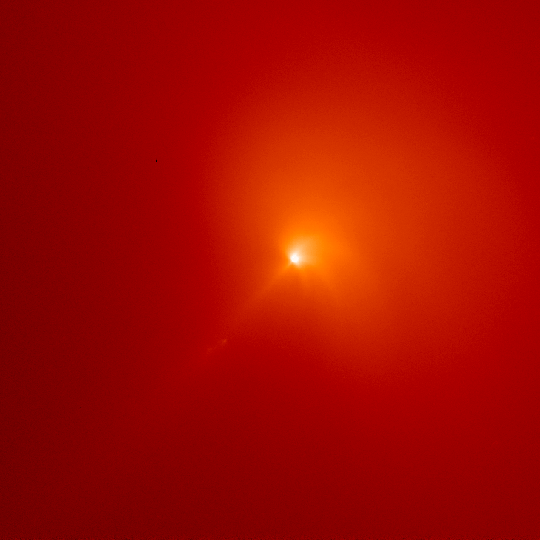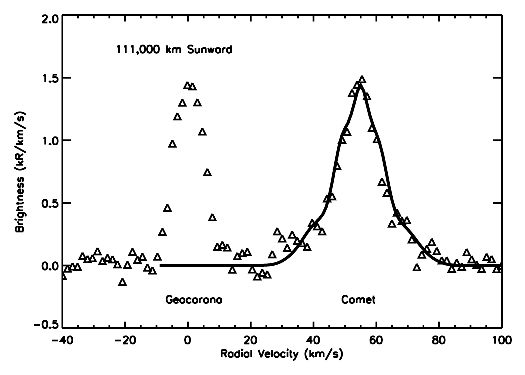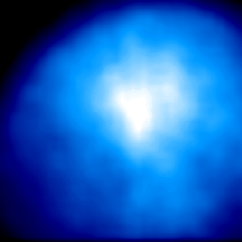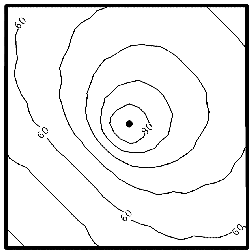
Observations of comet Hyakutake, the great comet of 1996, were made on April 4, 1996, using three of the instruments on the Hubble Space Telescope to study water photochemistry. The investigation was designed to make measurements simultaneously of hydrogen (H) and hydroxyl (OH) in the coma (or atmosphere) of Comet Hyakutake. Hydroxyl radicals are made up of a one hydrogen and one oxygen atom. These are the most abundant constituents in the coma (or atmosphere) of a comet, being produced when ultraviolet light from the sun breaks apart the water molecules that are evaporated from the comet nucleus. A water molecule is made up of two hydrogen atoms and one oxygen atom.


A key part of the investigation was the measurement of the expansion speeds of the hydrogen atoms, taking special advantage of the Goddard High Resolution Spectrometer (HRS), one of the Hubble instruments. Spectrometers separate light (ultraviolet light from the comet in this case) into its constituent colors. Speeds can be measured using the same Doppler principle which enables police radar to measure a car's speed. Observations in this program were designed to improve and test our understanding of water photochemistry which is important for the interpretation of a variety of observations of comets.

Shown above is the spectrum of the region around the ultraviolet emission of cometary Lyman-alpha taken with HRS. It was taken at a point located 111,000 km sunward of the nucleus where the comet's Lyman-alpha emission is optically thin. The comet's Lyman-alpha emission (marked "Comet" to the right) is centered at the comet's redshifted velocity of about 53 kilometers per second, showing the comet's speed relative to the Earth on that day. The thinner line to the left (marked "Geocorona") is produced by the Earth's hydrogen geocorona which is the most extended part of the Earth's upper atmosphere. The width of the comet line is indicative of the velocities of hydrogen atoms in the coma, some of which are in excess of 20 kilometers per second. The solid curved line is the result of a model for the distribution of hydrogen in the coma which accounts for the detailed physics and chemistry of the photochemical destruction of water and the production cometary H and OH. The importance of such a detailed model is that is permits us to calculate an accurate production rate of water from observations of H and OH.
WFPC2 was also used with the far ultraviolet Woods filter in order to provide a two-dimensional image of the hydrogen Lyman-alpha coma of comet Hyakutake. See the blue image to the left below.


The blue WFPC2 Lyman-alpha image on the left gives the two-dimensional distribution of Lyman-alpha emission by hydrogen in the comet. It is compared with a numerical model to the right shown to the same scale. The actual hydrogen distribution in the model is spherically symmetric, however, the distribution of light is not because the hydrogen coma is optically thick to the scattered solar Lyman-alpha UV radiation which prevents it from reaching the innermost coma. The model contours are in units of kilorayleighs and the dot marks the position of the nucleus in the model.